[ By WebUrbanist in Architecture & Public & Institutional. ]
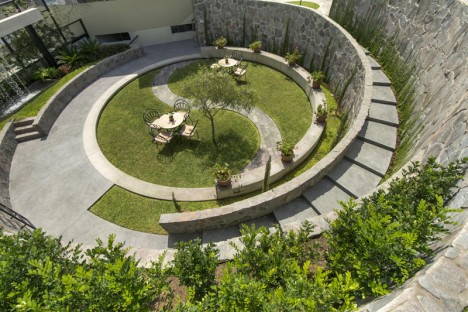
Traditionally legal in Peru, many citizens nonetheless find cockfights a morbid and gruesome affair and are thus celebrating the transformation of this sunken coliseum into a meditative and memorial public green space.
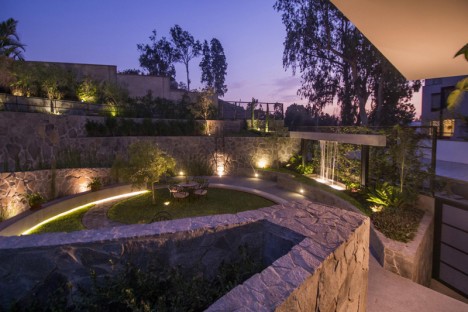
Paths, greenery and water features were added in part to lend the sensibilities of monuments and memorials to the place, commemorating the animals who suffered and died within the ring.

Remade by 2.8x Architects, this coliseum in Lima, Peru, has many preserved and reused elements, including large stones and cast concrete either left in place or redeployed on the property with new purposes in mind.
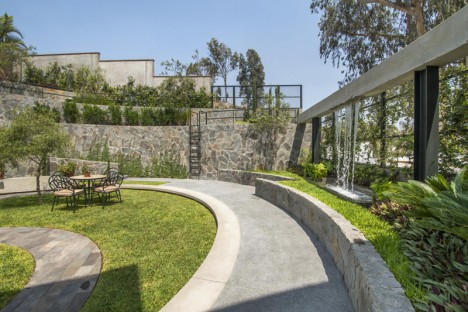
Since cockfighting has been historically seen a sport in the region (and heavily bet upon), bird fighting pits (aka “cockpits”) in the country have been correspondingly prominent and well-constructed places, not the seedy sideshows one may imagine in locations where it is illegal. The driving idea was to reflect the history of the space in the form of preserved ruins while also providing a new experience in this unusually enclosed, semi-subterranean space.
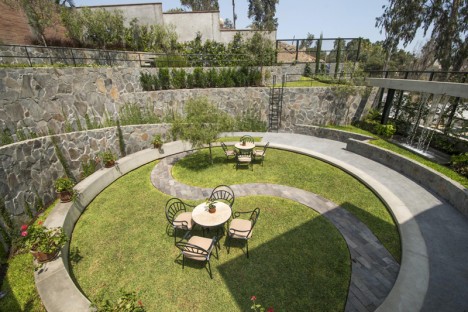
One can still imagine the historical horrors that took place before the conversion – armed with spurs for battle, cocks set about slashing and scraping one another, often resulting in the death of one or both combatants. At the same time, an abstracted yin-and-yang symbol at the center of the sunken circle and lush vegetation on all sides (filling the former stands and seats) conjure fresh and more optimistic feelings and associations among neighbors and visitors.
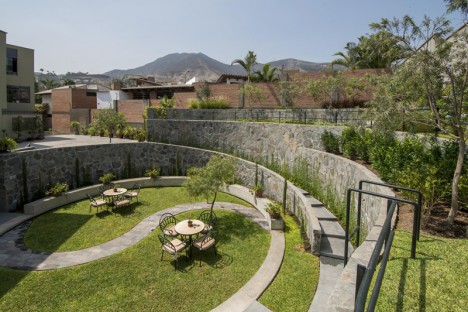
From the designers: “So the curved lines of the terraces contemplated in the project go on top of the remaining concrete stands, and the levels of these terraces try to maintain the original levels of some of the stands. This way the proportions of the coliseum continue. In the same way, the central space of the garden keeps the same dimensions and characteristics of the arena where the birds used to fight. The project has as background the hills of the residential area. It is because of the surroundings where the project is located, with hills all around, that we chose irregular “talamolle” stone as the main building material.”
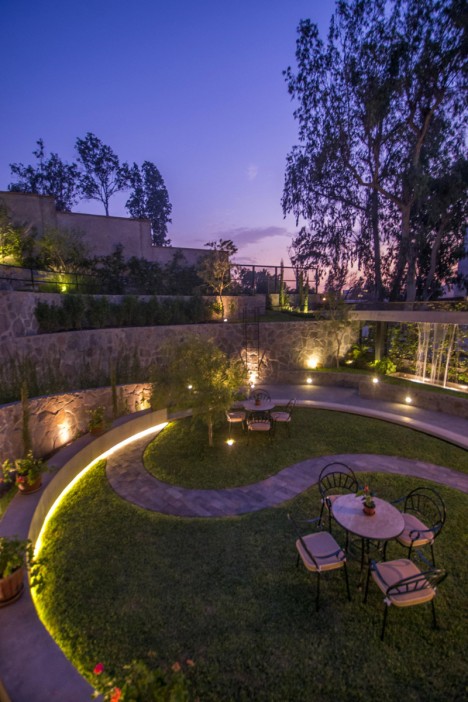
“We also used terrazzo, concrete, and green painted iron for some details like the fountain, the circular bench, the wire net, and the ramp at the entry among others. To reinforce the idea of a memorial garden and a place suitable for meditation, elements such as water, a circular ramp all around, and a curved path of stone crossing the central space were included. The path together with the central circular garden form the ying yang, that is the equilibrium center of the whole space. At night the diffused illumination has an important role too.”




[ By WebUrbanist in Architecture & Public & Institutional. ]
[ WebUrbanist | Archives | Galleries | Privacy | TOS ]
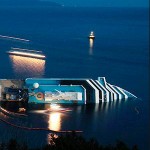
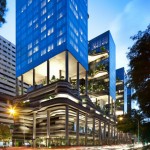
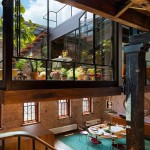
You must be logged in to post a comment.